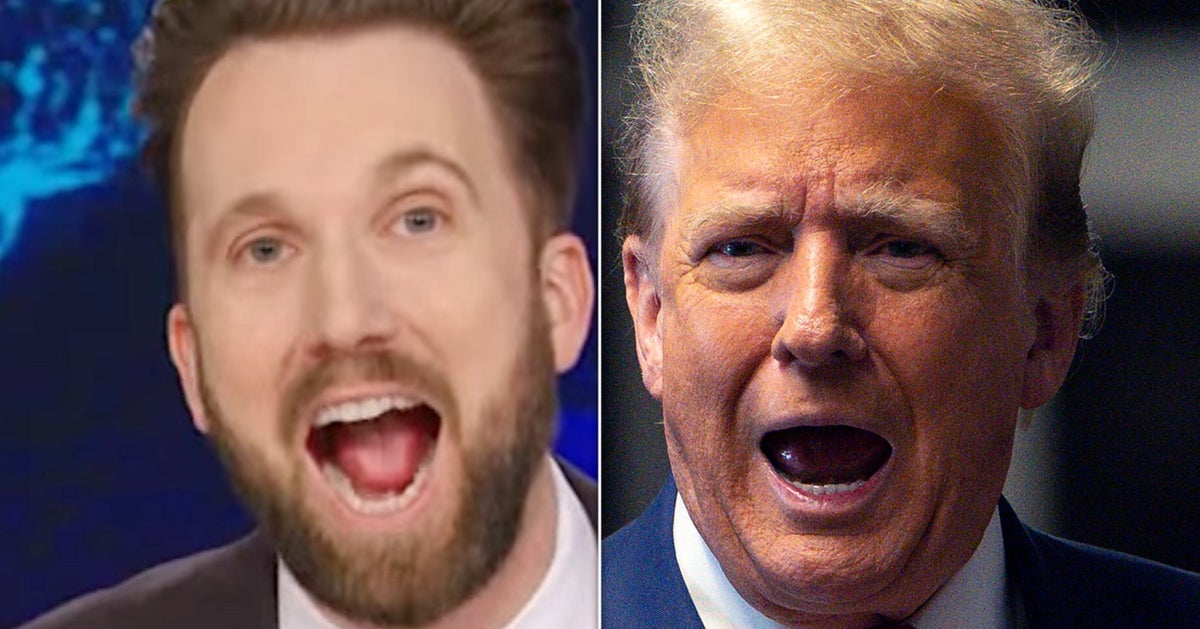
Former President Trump’s potential plan to exert more influence over the Federal Reserve is alarming experts and investors.
The Wall Street Journal reported Thursday that a group of Trump allies is crafting ways to chip away at the independence of the central bank — a constant thorn in the side of the former president — should he be reelected in November. They also argue Trump would have the power to oust Fed Chair Jerome Powell, whom he appointed to the job in 2017 and then berated through most of his term, despite legal protections from being fired without cause.
The campaign has distanced itself from the plan, and it would face serious obstacles in Congress, where Trump’s previous efforts to sway the Fed in his favor fell flat.
During his first term, Senate Republicans rejected three of Trump’s nominees to the Fed over concerns about their credentials and independence, and several senators told The Wall Street Journal they would oppose the campaign’s potential plan for a second term.
Even so, experts say Trump’s attempts could seriously harm the U.S. and its role as the center of the financial world.
“If it becomes clear that there’s going to be a Fed chair that answers to the president, I would expect a dramatic reaction in the markets and the White House would have to deal with that,” said Ian Katz, director at research consultancy Capital Alpha Partners.
“There are plenty of people in the markets who would like to see Trump be president again. I don’t think there are plenty of people in the markets who would like to see Trump be de facto Fed chair.”
The Trump campaign declined to provide The Hill with a copy of the plan obtained by the Journal and said it should not be considered an official position.
“Let us be very specific here: Unless a message is coming directly from President Trump or an authorized member of his campaign team, no aspect of future presidential staffing or policy announcements should be deemed official,” the Trump campaign said in a statement.
The Fed is a politically independent agency run by a board of governors appointed by the president and confirmed by the Senate. The president also selects governors to serve as chair, vice chair and vice chair of supervision, roles that also require Senate confirmation.
The president, however, has no legal power over the decisions of the Federal Open Market Committee (FOMC), the panel of Fed board members and regional bank chiefs responsible for setting interest rates. Fed chiefs have been particularly averse to presidential influence since the Nixon administration, when then-Fed Chair Arthur Burns held off on raising interest rates under White House pressure despite rampant inflation.
Under the U.S. system, “You have a certain confidence that the president of the country can’t just pick up the phone, jawbone the Fed chair into lowering interest rates … when perhaps that isn’t the sound economic decision to make at that moment,” Katz said.
“If you think that the Fed has been manipulated for political reasons, that makes us no better in that respect than many, many countries in this world that we would regard as not having reliable or stable financial markets.”
But the Trump campaign plan obtained by The Wall Street Journal would shatter decades of institutional protections built to insulate the Fed from the political whims of the president.
The plan calls for installing a Fed chair who would consult with Trump on interest rate decisions, according to the Journal, which would be a major breach of the bank’s operational autonomy.
The plan also calls for giving the White House more authority over Fed regulations and the Treasury Department a greater role in joint emergency lending programs, such as those deployed during the 2007-08 and 2020 recessions.
While Fed chairs and presidents will meet periodically throughout their terms, the bank and White House always insist those discussions never touch on interest rate decisions. Fed chairs and Treasury secretaries meet more regularly, but also with boundaries around interest rate decisions.
Brian Gardner, chief Washington policy strategist at Stifel Investment Bank, said the proposal to have the Fed chair consult with Trump is unusual, but not as alarming as other potential plans floated in the Journal article.
“Fed chairmen already consult with the Treasury Secretary so there is a well-established communications link between an administration and the Fed,” Gardner wrote. He added that “a chairman cannot force an agreement and has limited (if any) recourse against opposition emanating from the committee.”
Some Trump allies have also floated the former president serving as an acting Fed governor himself, according to the Journal, which Gardner said “would certainly be litigated and the attempt would probably be rejected by the courts.
“However, any effort, even If ultimately unsuccessful, could undermine investor confidence and disrupt financial markets at least temporarily,” Gardner said.
Powell, a Republican, was renominated by President Biden and can serve as Fed chair through the end of his term in 2026. Any attempt by Trump to fire Powell or reshape the Fed board beyond the nomination process would likely end up in court and cause serious losses in financial markets — one of Trump’s preferred ways to gauge his economic success — along the way.
In a 2019 interview, Powell said he did not believe the president has the power to fire him and that he would serve out the remainder of his term. He also stressed the importance of the Fed’s autonomy and political independence, making it unlikely he would yield to Trump.
“The law is clear that I have a four-year term, and I fully intend to serve it,” Powell said.
“We are directed to take, to execute policy, in a strictly nonpolitical way, serving all Americans, and that’s what we do,” Powell said.
Powell faced relentless pressure from Trump to slash interest rates throughout 2018 as the stock market sunk and the former president sought greater leverage in trade battles with the European Union and China. The Fed was in the process of bringing interest rates up from the near-zero levels set during the 2008 recession and was attempting to get ahead of inflation that never materialized.
When the Fed reversed course in 2019 and began cutting rates, Trump still regularly blasted the Fed for refusing to cut back down to crisis levels. The former president questioned whether the Fed chair or Chinese President Xi Jinping were more harmful to the US.
Trump eventually eased up on Powell during the COVID-19 recession, as the Fed slashed rates and deployed trillions of dollars in stimulus to fend off a deeper crisis.
But the former president has nonetheless insisted he would not renominate Powell and raised questions about his motivations as the Fed prepares to cut interest rates after hiking them back to four-decade highs.
“I think he’s going to do something to probably help the Democrats, I think, if he lowers interest rates,” Trump said in an interview on Fox News Business Network’s “Mornings with Maria” in February.
Trump added that he thought Powell was “political.”





